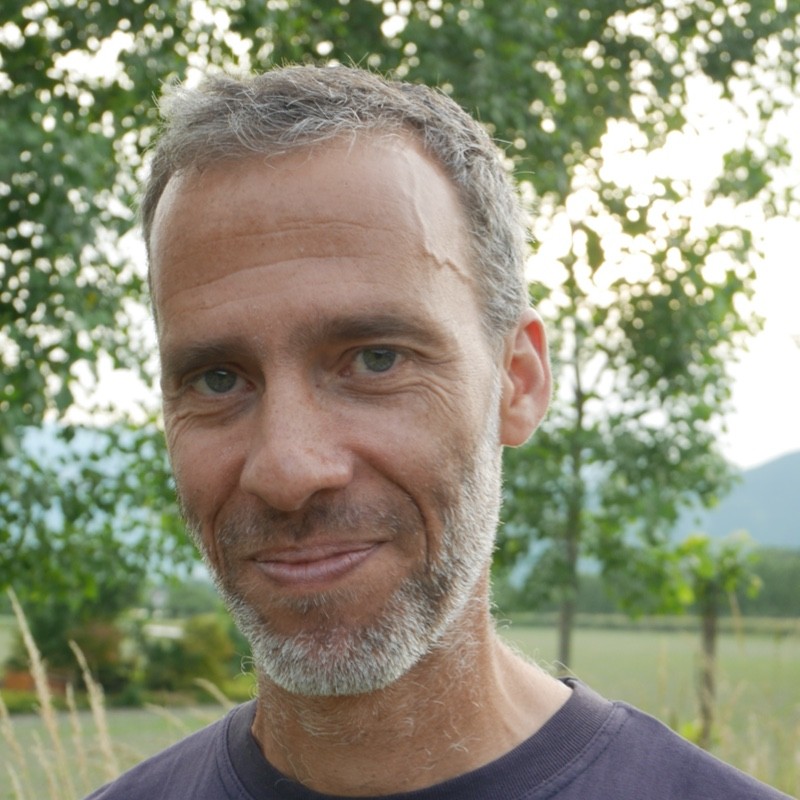He was born on August 19, 1972 in Colmar, France. He received the Dipl.-Ing. and the M.S. degrees in 1995 and the Ph.D. degree in 1999, both from the Grenoble Institute of Technology (G-INP), France, all in electrical engineering. In 2012 he received the habilitation to direct researches (Habilitation à Diriger des Recherches) from the G-INP. He joined the National Center of Scientific Research (CNRS), France, in 2001 as Full Researcher (Chargé de Recherche), working at the GIPSA-Lab (Grenoble Laboratory of Image, sPeech, Signals and Automatics), Grenoble, France. From 2011 to 2015, he was member of the GIPSA-Lab board (as elected member) and from 2015 to 2019, he was at the head of the CICS group (Communication and Information in Complex Systems) from the GIPSA-Lab.
Dr. Zozor has regular teaching activities at the Grenoble Institute of Technology, France, at the Polytechnic Institute of Bucharest, Romania, and at the faculties of engineering, of mathematics and of physics of La Plata, Argentina. In 2000, he spent 7 months at the Swiss Federal Institute of Technology of Lausanne (EPFL). In 2012-2013, he spent 13 months as invited professor at the Institute of Physics of La Plata (faculty of Physics, National University of La Plata), Argentina and received a grant of the region Rhône-Alpes for this stay. His current researches include noise-enhanced information processing (stochastic resonance, noise-improved detection and information transmission, effect of noise in pooling networks and distributed signal sensors networks…), generalized measures of information (Lempel-Ziv complexity, classical and quantum Csiszàr divergences and Salicrú entropies, applications in biology, generalized entropic formulations of the uncertainty principle and of the Landau-Pollak inequality…), classical signal processing in special statistical contexts (estimation and detection in alpha-stable noise, elliptical distributions, interference modeling for information transmission…). Since June 2015, he is in the editorial board of IEEE Signal processing Letters as Associate Editor, and since June 2019 as Senior Editor Area. Since September 2021 he is elected member of the French National committee for the Scientific Research (in section 7 — Automatic, Robotic, Speech, Image, Signal, Statistical Learning, Communication, SoC — and in the interdisciplinary commission CID 55 — sciences and data— ), and also responsible of the speciality Signal-Image-Speech-Telecommunication of the doctoral school Electronic, Electrotechnic, Automatics and Signal Processing of Grenoble.
Lempel-Ziv complexity and variations for multivariate data analysis
In this course, I will provide an overview of an algorithmic complexity measure, namely the Lempel-Ziv complexity, and of associated measures, as potential tools for the analysis of multidimensional data. I will focus on this tool dealing with data with discrete states taken their values on an alphabet of finite size —context for which this complexity is defined, but also of continuous states. In the latter case, the approach is based on a quantification based on the construction of the so-called permutation vectors, the same process that underlies the permutation entropy due to Bande and Pompe (PRL 2002).
In a first part, I will give the definition of the first version of the Lempel-Ziv complexity, due to Lempel and Ziv (IEEE TIT 1976), which I will discuss during this course. This measure will also be presented dealing with multidimensional data, with components taking their values not necessarily in the same alphabet. I will then present measures associated with this complexity measures such as mutual information-like measure. These measures will then be applied to synthetic data (random boolean networks, minority game) to illustrate their potential for data analysis.
As real life data are rarely with discrete states, I will show in a second step how the Lempel-Ziv complexity can be used is such a context. To this end, I will recall how permutation vectors can be constructed from vectors with continuous state components. I will also show that dealing with scalar signals, this step can be preceded by an embedding step in a higher dimensional space. The quantization can be schematically seen as similar to the so-called sigma-delta quantization. I will end this part with illustrations analysing chaotic signals and a real EEG signal via the measure presented in this part.
I will then end the course by presenting an application of the Lempel-Ziv complexity used in conjunction with the Shannon entropy, applied on permutation vectors, as a tool to contrast chaotic signals and noise.

GIPSA-lab, University Grenoble - Alpes / CNRS - France
